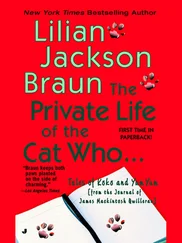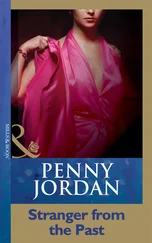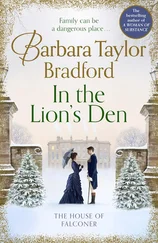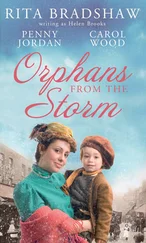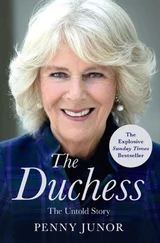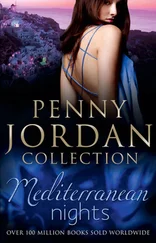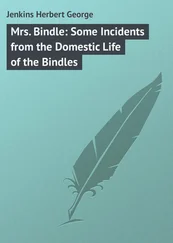Everyone was told this book would finally show what a marvellous person he was; and people were bored out of their wits by Business in the Community and the Prince’s Trust; they wanted to know about their private life. We’re interested in who they’re going to bed with, except we got rather bored by that because we couldn’t keep up with it.
Superficially the Prince of Wales is a carbon copy of his father; it is as though he has modelled himself on the older man. They walk and talk the same way, hold their hands behind their backs in the same way, they enjoy the same sports, share the same interests, and are both involved in charities with much the same agendas. But according to the Duke of Edinburgh there is a fundamental difference. ‘He is a romantic – and I’m a pragmatist. That means we do see things differently. And because I don’t see things as a romantic would, I’m unfeeling.’
If Charles and his parents had only been able to talk, the history of the last two decades might have been very different and thus also the future security of the monarchy. Prince Philip might have spoken to Charles about the need to make up his mind about Diana rather than sending him a letter which was open to misinterpretation. Charles may have discussed his fears that this marriage was going to be a mistake during the five months of his engagement, so that they could have devised a dignified way of calling the whole thing to a halt. And if all else had failed and they had gone down the aisle and given the public the fabulous fairy-tale wedding that so lit up the world, he might have asked his parents for help when things started to unravel at such terrifying speed. Instead, he said nothing and they said nothing. And, sure as hell, no one else was going to say anything, even though everyone in Kensington Palace and St James’s Palace could see the disaster unfolding before their very eyes.
Sadly, the marriage was never going to have been bliss for either of them, that was clear from the start. There were too many differences, too many unrequited needs, too much loneliness; but they could have kept up a façade for the sake of their sons and the monarchy and the millions of people who had wished them well on their wedding day, identified, empathized and invested such hope in their union. By the time any talking happened it was too late. The Princess had gone public, she was out of control – and scaring even herself – and on course for destruction.
As a former courtier says, ‘You might have thought the Prince could have found a way of dealing with Diana. Have said, “Let’s have a high-level conference over tea to see how we’re going to manage this.” But it’s part of his psychology that he can’t do that, it’s all part of not giving a PR answer, not telling the smallest of white lies, when he should.’
TEN
Camilla and the Future
The Queen has long held the wish that the earth would open up and swallow her newest daughter-in-law. It is nothing personal – they scarcely met during all the years of controversy – and when they did know one another, in the days when Camilla was a regular guest at Balmoral, Sandringham and Windsor, she was very fond of her. Everyone was very fond of Camilla, particularly the Queen Mother. She was there in those days as the wife of Andrew Parker Bowles, who boasted the unlikely title of the Queen’s Silver-Stick-in-Waiting. It is a title from Tudor times – the incumbent kept close to the sovereign to protect him or her from danger and carried a staff of office, topped in silver. Camilla was easy, friendly, earthy and game for anything; she also loved horses and dogs – the perfect combination to endear anyone to the House of Windsor. But the Queen, like her former Private Secretary Robert Fellowes, believes that with few exceptions everything that has gone wrong for the monarchy in the last twenty years has been attributable to Mrs Parker Bowles. It is hard to disagree.
Whichever story you buy about the relationship – the Princess’s version, that there were three of them in the marriage, so it never stood a chance; or the Prince’s version, that he gave up Camilla before his engagement and there was no physical contact until more than six years later – Mrs Parker Bowles plays a central role. She was certainly the Prince’s lover before Diana appeared on the scene, and she was definitely in place again after 1987. He told us so. Whether activity in the intervening years was all in Diana’s imagination or not is largely immaterial. By 1992 the Princess of Wales was passionately jealous of her rival and wanted the world to know how unhappy she was about it. Her chosen method was through Andrew Morton, a charming, roguish former Daily Star journalist. He wrote a riveting book the like of which has never been seen before or since.
He once told me that he was able to write his book Diana: Her True Story in 1992 because of one I had written the previous year which had incensed Diana. That book was Charles and Diana: Portrait of a Marriage and in it I had said that the marriage was not a happy one for a multitude of reasons – something I had first mentioned in a biography of Charles four years earlier – and they were leading largely separate lives with separate friends, which was sad, but that it was a successful working partnership none the less. They both worked hard, both made a real difference in their charitable activities, were a terrific double act for the House of Windsor and were both excellent parents. Jonathan Dimbleby mentioned my book as a footnote in his own book three years later. He called it ‘a sensitive account of a working partnership which judged that the marriage was, in those terms, “actually very healthy” – a conclusion which, pre-Morton, did not seem so far from the truth as it would do with the benefit of hindsight’. What incensed Diana was the suggestion that, ten years into her marriage, she was happy with this situation; and she set out to tell the world what her life was really like.
Morton used to play squash with a doctor friend of Diana’s, James Colthurst, and he acted as a go-between. The full truth of Diana’s participation only came out after her death. She had spoken into a tape recorder at Kensington Palace during the summer and autumn of 1991 and Colthurst had delivered the tapes to Morton. The result was explosive: eighteen thousand words on tape and a publishing phenomenon. Diana: Her True Story , which ultimately led to the break-up of the marriage, rocked the monarchy to its foundations. It talked about Diana’s troubled childhood, her feelings of abandonment when her mother left, her bulimia, her husband’s indifference towards her, his obsession with his mistress. The authority of the text was bolstered by on-the-record quotes from some of Diana’s closest friends like James Gilbey (of Squidgygate fame) and old flatmate Carolyn Bartholomew. It talked about the Prince’s shortcomings as a father and the loneliness and isolation Diana had felt for so many years, trapped in a loveless marriage within a hostile court, made worse by a cold and disapproving Royal Family. The book was serialized in the Sunday Times. ‘Diana Driven To Five Suicide Bids By “Uncaring” Charles’ screamed the banner headline, while the Palace went into meltdown. So many incidents revealed in the serialization, such as those occasions on which the Princess had self-harmed, happened at Sandringham; plans over who took the children where were discussed in the privacy of their office. Morton’s sources were good; suspiciously good. And it wasn’t the first time that stories had inexplicably been leaked.
Robert Fellowes, treading difficult ground, not for the first or last time, as both Diana’s brother-in-law and the Queen’s Private Secretary, asked Diana if she had had anything to do with the book. Diana swore she hadn’t and Fellowes believed her. The Duke of Edinburgh also challenged her and again she denied it; lying, as it turned out in both cases. The chairman of the Press Complaints Commission therefore duly issued a statement condemning the serialization, and was left feeling very foolish and exceedingly angry when Diana went straight round to Carolyn Bartholomew’s house (having telephoned the newspapers to ensure photographers would be waiting) and in a public show of approval embraced her on the doorstep.
Читать дальше


